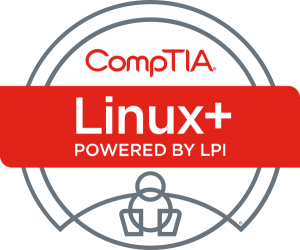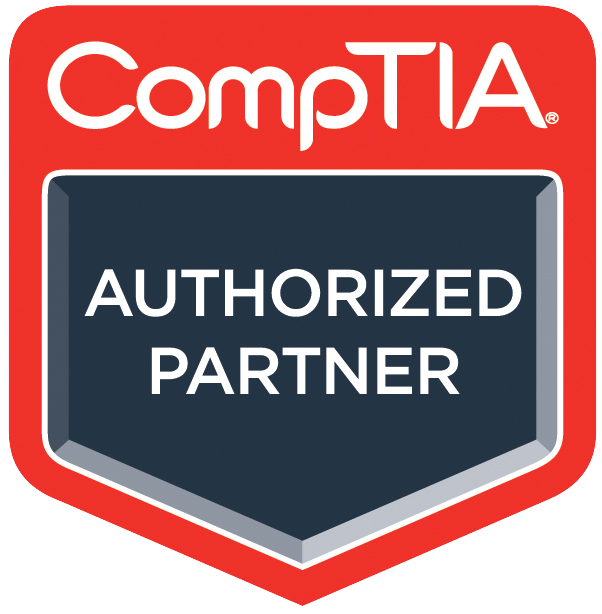Overview
Courses Benefits
The full potential of Linux is best seen in a network environment. Linux offers many services including web, file and printer sharing, mail, among others. This Linux training course teaches you how to take advantage of the many network services that Linux provides that are useful in a corporate setting. CentOS - a Linux distribution that is based on Red Hat Enterprise Linux (RHEL), as well as Ubuntu are both used for this course.This course will help you prepare for the CompTIA Linux+ certification — a highly-valued certification for Linux administrators.

To attain CompTIA Linux+ certification, you need to pass the exam XK0-004. This course and Course 521 - Linux System Administration will prepare you for the XK0-004 exam.
ActiveLearning is an Authorized CompTIA Partner.

You Will Learn How To
- Perform TCP/IP network configuration
- Create a file server using Samba, FTP, and NFS
- Manage printers and queues
- Install and configure the Apache web server
- Create a mail server using Sendmail and Dovecot
- Set up a proxy server using Squid
- Perform basic host-based security administration
- Write simple Bash shell scripts
- Manage, configure, and update the kernel
Who Should Attend
Course Outline
The Linux Kernel
- Kernel Types
- Updating Kernel from Precompiled Kernel package
- Installing Kernel from Source
- Customizing Kernel
- Modules Management
System Startup
- Boot Sequence
- The GRUB boot loader
- Kernel initialization
- Init initialization
- Controlling Services
Printing
- System-config-printer
- Adding Printers
- Using CUPS
- Managing Print Jobs (lpr, lpq, lpm)
- Printing Utilities
IP Addressing
- Understanding the IP Address
- Netmasks and Network Classes
- Subnetting and CIDR
- Network and Broadcast Address
Network Configuration
- Changing Your Hostname
- Activating and Deactivating a Network Interface
- Assigning an IP Address
- IP Aliases
- Network Configuration Tools
Routing
- Routers
- Displaying the Routing Table
- Adding and Deleting Routes
- Tracing Paths to Other Networks
TCP/IP
- The TCIP/IP Protocol Stack
- TCP vs UDP
DNS
- The /etc/hosts File
- DNS Concepts
- Installing DNS
- Configuring Clients
- Configuring DNS – named.conf
- Securing DNS Using a chroot Environment
FTP
- The FTP Protocol
- Installing and Configuring VSFTPD
- Running and Testing FTP
- Listing Files
- Downloading and Uploading Files
- Common FTP Operations
- Monitoring Usage
NFS
- NFS Overview
- Installing NFS
- Starting and Stopping NFS
- Sharing or Exporting Directories
- Mounting and Unmounting a Remote Share
Samba
- Introduction to Samba
- Installing Samba
- Configuring Samba
- Sharing Files
- The NetBIOS Name Server
- Running and Testing Samba
- Imposing File Sharing Security
Sendmail
- Simple Mail Transport Protocol
- Sendmail Overview
- Installing Sendmail
- Configuring Sendmail for Incoming Mail
- Configuring Sendmail for Outgoing Mail
- Inbound Sendmail Aliases
- Imposing SMTP Restrictions
- Common Sendmail Commands
Post Office Protocol
- POP3 Overview
- Installing dovecot
- Configuring and Testing dovecot
Apache Web Server
- The HTTP Protocol
- Installing and Configuring Apache
- Running and Testing Apache
- Virtual Domains
- Monitoring Access
Squid Proxy Server
- Squid
- Installing and Configuring Squid
- Client Configuration
xinetd and tcp Wrappers
- Xinetd Managed Services
- Xinetd Default Controls
- Xinetd Access Controls
- TCP Wrappers Configuration
- Daemon and Client Specification
SSH
- Openssh overview
- Types of authentication
- Installing openssh
- Configuring openssh server
- Using openssh client
Using the Firewall (Iptables)
- The NetFilter Hooks
- Using system-config-securitylevel
- Showing effective setup
Shell Scripting
- Commands and Comments
- Variables and Scripts
- Script Input and Output
- Command Line Argument
- Export Variables
- Shell Operators
- Control Structures

